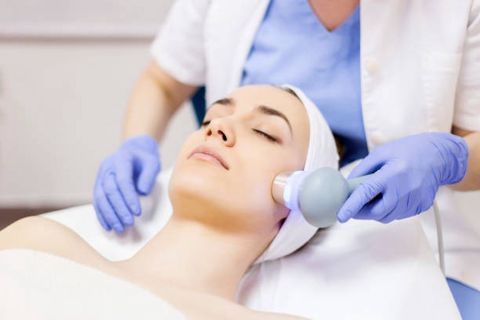
Laser skin tightening is a popular cosmetic procedure aimed at improving skin elasticity and reducing the appearance of wrinkles and sagging skin. Various types of lasers are used in this process, each with distinct mechanisms and benefits. Laser Skin Tightening in Islamabad & Pakistan
Understanding these different types can help you choose the most suitable option for your skin type and concerns. Here’s a detailed overview of the different types of lasers used in skin tightening:
Ablative Lasers:
Mechanism: Ablative lasers work by removing the outer layers of the skin, which stimulates the body’s natural healing process and encourages the production of new collagen.
Types:
CO2 (Carbon Dioxide) Lasers: These lasers are highly effective for deeper wrinkles and significant skin tightening. They can produce dramatic results but also involve a longer recovery period.
Erbium YAG Lasers: These are slightly less aggressive than CO2 lasers and are often used for treating fine lines and wrinkles. They are suitable for patients looking for significant results with a shorter recovery time compared to CO2 lasers.
Benefits:
Significant improvement in skin texture and tone.
Long-lasting results due to deep collagen remodeling.
Considerations:
Longer downtime and recovery period.
Potential for side effects like redness, swelling, and scarring.
Non-Ablative Lasers:
Mechanism: Non-ablative lasers target the deeper layers of the skin without removing the surface layer. They heat the underlying skin tissue, stimulating collagen production and tightening the skin over time.
Types:
Nd
(Neodymium-Doped Yttrium Aluminum Garnet) Lasers: These lasers penetrate deeply into the skin, making them effective for deeper skin tightening and collagen stimulation.
Diode Lasers: These are effective for mild to moderate skin tightening and are often used for treating fine lines and improving skin texture.
Benefits:
Minimal downtime and faster recovery.
Suitable for patients who prefer less invasive procedures.
Considerations:
Results are more gradual and may require multiple sessions.
Less dramatic results compared to ablative lasers.
Fractional Lasers;
Mechanism: Fractional lasers treat only a fraction of the skin at a time, creating microthermal zones. This allows the skin to heal faster while still promoting collagen production and skin tightening.
Types:
Fractional CO2 Lasers: These combine the benefits of ablative CO2 lasers with fractional technology, offering significant skin tightening with less downtime than traditional CO2 lasers.
Fractional Erbium Lasers: These are less aggressive than fractional CO2 lasers and are suitable for patients seeking moderate skin tightening with minimal recovery time.
Benefits:
Faster recovery compared to fully ablative lasers.
Effective for improving skin texture, tone, and tightening.
Considerations:
Multiple sessions may be required for optimal results.
Potential for temporary redness and swelling.
Radiofrequency (RF) Lasers:
Mechanism: Radiofrequency lasers use electromagnetic energy to heat the deeper layers of the skin, promoting collagen production and skin tightening without affecting the surface layer.
Types:
Monopolar RF: Delivers energy deep into the skin, providing effective skin tightening with minimal surface damage.
Bipolar RF: Targets more superficial layers of the skin, suitable for mild to moderate tightening.
Multipolar RF: Uses multiple electrodes to deliver energy, providing uniform heating and effective skin tightening.
Benefits:
Suitable for all skin types and colors.
Minimal downtime and discomfort.
Considerations:
Results are typically less dramatic compared to ablative lasers.
Multiple sessions are often needed to achieve desired results.
Ultrasound Lasers:
Mechanism: Ultrasound lasers use focused ultrasound energy to heat the deeper layers of the skin, stimulating collagen production and tightening the skin.
Types:
High-Intensity Focused Ultrasound (HIFU): This technology delivers precise ultrasound energy to the deeper layers of the skin, providing effective tightening and lifting.
Benefits:
Non-invasive with no downtime.
Suitable for patients looking for gradual skin tightening.
Considerations:
Results are gradual and can take several months to become noticeable.
Multiple sessions may be required.
Conclusion:
The choice of laser for skin tightening depends on various factors, including your skin type, the degree of skin laxity, and your desired results. Consulting with a qualified dermatologist or cosmetic surgeon can help you determine the most suitable laser treatment for your needs. Each laser type offers unique benefits and considerations, making it essential to understand your options and make an informed decision.
0 comments
Be the first to comment!
This post is waiting for your feedback.
Share your thoughts and join the conversation.
